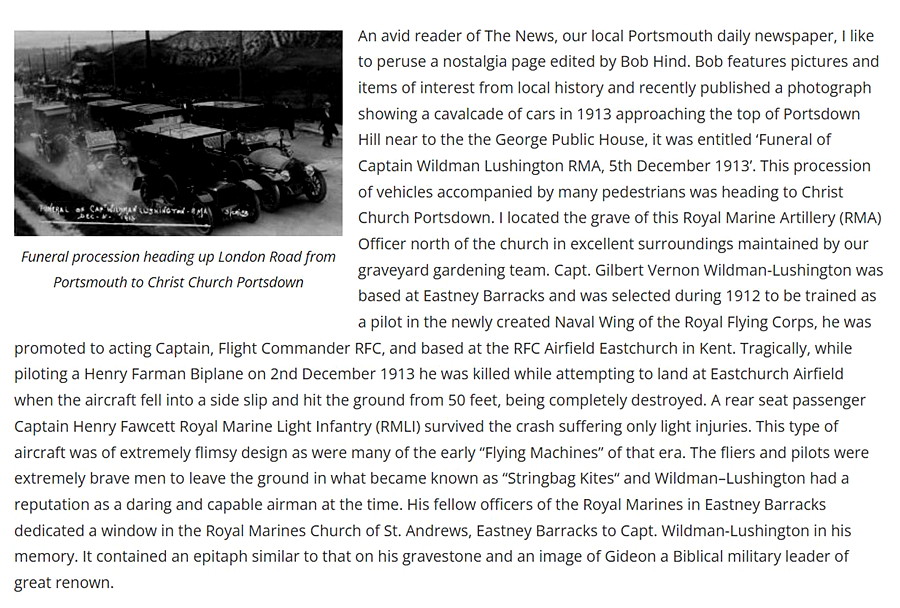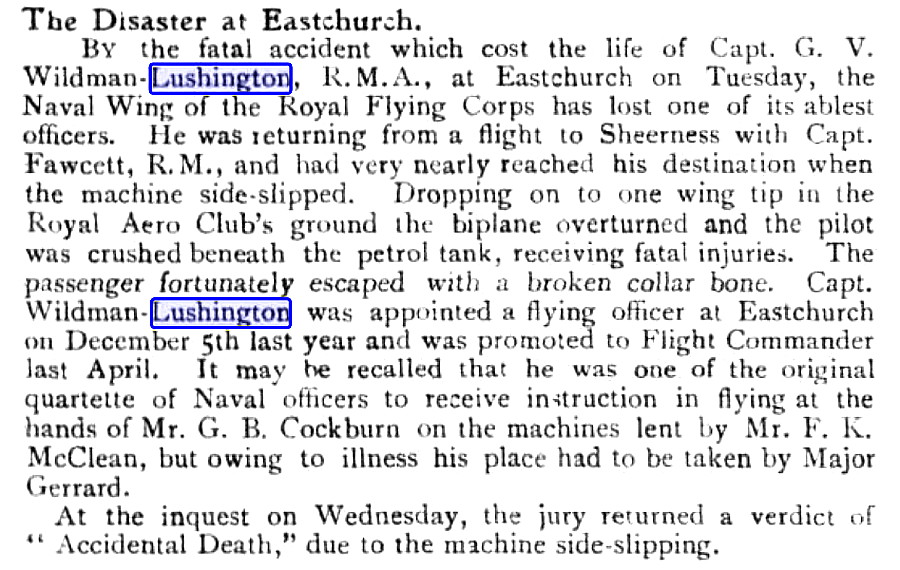Eastney Barracks
EASTNEY BARRACKS: Very temporary Landing Ground(s)
This picture is from my Google Earth © derived database. (Note: Not all flying sites are marked)
Location: At the eastern end of Southsea, just N of the Eastney Espanade
Period of operation: 4th July 1912 and 27th January 1913
NOTES: On the 3rd July 1912 the Short S.38 was hoisted aboard HMS London at Sheerness in Kent and set sail for the Portsmouth Naval Review and manoeuvres. This had been fitted, just like HMS Africa and then HMS Hibernia, with a sloping platform on the forward part of the ship, to enable an aircraft to take-off. In all these experiments the Short S.38.
The following day, whilst still 19 miles out from land, Lieut. C. J. L'Estrange Malone took off into a 20kt wind while the ship was steaming at 12kts. The S.38 lifted off more or less vertically with no forward run. Hardly surprising as at that speed the S.38 was not far short of its normal level cruising speed. This is now claimed to be, (but not by design of course), the first vertical take-off by any aircraft.
He then flew to EASTNEY BARRACKS in Southsea and landed without difficulty. In those days EASTNEY BARRACKS housed the Royal Marines. We do not know exactly where he landed but most likely in one of the open park spaces which still exist today.
For more information about these early ship-board aircraft launching experiments please see my listings for, SHEERNESS, EASTCHURCH, OVERCOMBE CORNER and WEYMOUTH BAY 1912.
A MICHAEL T HOLDER GALLERY
After noticing my listing for EASTNEY BARRACKS appearing, Mike Holder, a great friend of this 'Guide', decided to see if anything else was known. And, the listing was bereft of maps and photos. It turned out that, just a few months after the event listed above, on the 27th January 1913, Lieut (later Captain) Gilbert Wildman-Lushington flew down from EASTCHURCH in KENT. Probably landing on the same area?
Article One was published in the East Anglian Daily Times on the 28th January 1913.
Article Two was published in Flight magazine on the 6th December 1913, referring to an event at EASTCHURCH which took place on the 29th November.
Very sadly Captain Wildman-Lushington was killed in a flying accident at EASTCHURCH a few days later, on the 2nd December 1913. Accounts state that he side-slipped into the ground from a low height. Today we know better and without much if any doubt his aeroplane stalled and began to enter an incipient spin. It was, in those days, a constant threat as the possiblility of encountering wind-shear, or indeed turbulence, could, due to the very slow speeds they could fly at, very easily render the aeroplane into a stalled condition.
And, when close to the ground, a recovery was impossible. Plus of course, they knew nothing of how a stalled condition can be rectified with a wing drop. Basically, on most aircraft, get the nose steeply down and lift the downward wing with opposite rudder. Rudders in those days were generally far too small to be effective.
Article three is by Keith Fisher, C. C. P. historian. Article Four was published in Flight magazine, also on the 6th December 1913.
NOTES: Although the British were late in developing machines for powered flight, the French being far in advance, we caught up surpringly quickly. The first recorded powered flight in the UK was in 1909, so it is a huge credit to the Royal Navy, or rather a handful of their officers, that the potential was soon realised for using aircraft for spotting duties. Indeed, in 1912, developing a method of launching them from a ship at sea, and of course, soon after a ship under way.
We'd love to hear from you, so please scroll down to leave a comment!
Leave a comment ...
Copyright (c) UK Airfield Guide



























